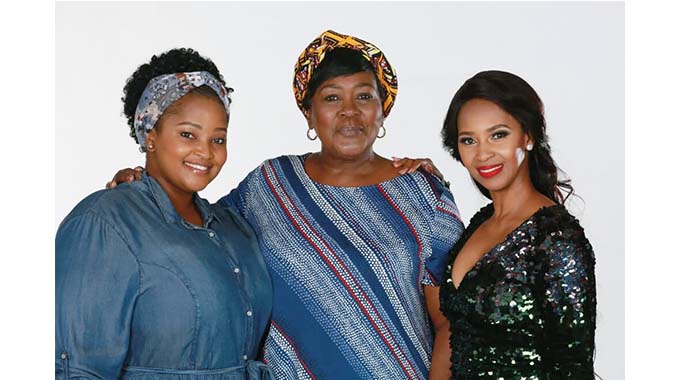It all started with a virus

Pathisa Nyathi
New vistas emerge on the far away horizon. I get stunning panoramic views, the type that would have captured the heart of Cecil John Rhodes. The blue hazy rim of hills near and yonder provides a background that releases the little energy that remains in my body. The spirit is willing, but the flesh is getting challenged. The urge to explore the hill that I am breaching is too strong to resist.
From here I can see several hills enveloped with royal blue haze: Mawaza, Nyambi, Ratanyane (Riretenyana), Mazambane, Gobadema, Sinkhamaswe, Maribeha and Libankwe, among others.
As young children we had been discouraged to scale this twin set of hills known as Mbokodo on account of their shape. Today, more than 60 years later, curiosity has got the better of me. I have put aside childhood fears to venture up one of the hills. Leg muscles are not giving their best performance. They have witnessed many Christmases. I am extra careful in the manner I scale the rocks lest the fearful creature, our parents’ bogey man that kept the curious us away from the Mbokodo Hills stalks and sends me packing to the next world. My eyes dart around like those of a chameleon, all the time hoping not to see the dreaded monster which is said to bleat like a goat.
There are roughly hewn rocks that litter my ill-defined track up the hill to the summit. I become suspicious that these could be rocks that constituted the several stone walls that grace many of the hills here at Sankonjana. Just as I was to get to the summit, indeed there emerged a surviving portion of the stone wall. It was a discovery on my part. So, after all, the majority of the hills in this area were graced with ancient stone walls which were an integral part of the Mapungubwe State at the confluence of the Shashe and Limpopo rivers.
It is likely there was a settlement where one of the economic occupations was metal refining, on account of the massive weathered mounds of slag and the nodules that litter some of the rocks. For a while I took a well-deserved rest to allow my weak muscles to regain the much-needed energy to carry me down the slope. I decided to pass through one homestead where a relative was digging up clay soil from an anthill to add to her crop fields in preparation for the impending rainy season. The rains had pounded the area a day before my arrival.
Our discussion meandered the African style till we got to the finds from her digging. The lady, NakaBokang, led me into her work site where she pointed out to me some bleached bones which she thought were exposed human bones from a distant past. Possibly these are the remains of the people who constructed the stone walls that abound at Sankonjana and other adjoining areas, almost as far to the north as Shape close to Gwanda town.
I have no reason to doubt that these are indeed remains of a person who was buried in an anthill. The type of soil that brick moulders use comes from anthills. From many of them human remains in the form of bleached and fragile bones have been retrieved. Whenever the bones are exposed, the brick moulders quickly cover them up and relocate elsewhere to resume their extractive activities. NakaBokang leads me to a site close by. There, nicely tucked away are a number of clay pot shards. Even one who is less than amateurish in archaeology like me can tell these were part of a well fired clay pot. The circular rim is readily identifiable. A few centimeters below the rim there are two parallel circular moulded decorative rings which bear incisions. Two of them fit perfectly and almost a third of the rim is complete.
Things begin to come together. One of the characteristic features of the universe is the relatedness of its major features: stars, planets and moons. I have identified the others as movement and rhythm. Here there is an anthill, some human remains and now pieces of pottery. It’s a burial site by people who hold a certain belief system. Cultural behaviour is informed by cosmological underpinnings. Conversely, we can work out a people’s belief system by studying their cultural and ritual behaviour.
What I am able to decipher is that the burial is representative of a people who believed in spirituality. For them death was not the end. Like the Maya people in Mesoamerican area they viewed life as cyclical. Death was not the end but a transition from ephemeral or transient life to one that is eternal. Death is the commencement of a long journey to some destination and the departing spirit is provided with grave or funerary objects that were part of an individual’s life on the earth plane. The clay pot was one such grave item.
Be that as I may, my interest in this series is on Covid-19. Unfortunately, I have other interests in the area where I was born and raised up. All the same, I always have to sniff around for things covid taking place in the area. At Babirwa Business Centre there was constructed after independence a rural health centre.
A fully fledged hospital is far away at Tshelanyemba and another even farther away at Maphisa. Many of these rural health centres are manned by medical staff that were trained by ZAPU during the liberation struggle. A nurse at the centre informed this writer that as staff at the centre they are involved in information dissemination relating to the Covid-19 pandemic. They take advantage of social gatherings within the centre’s catchment to spread word regarding the pandemic that has wreaked havoc on humanity.
Food for work brings the locals together. This is the arrangement that my father, who never set his foot in a western educational institution used to refer to as fuduweki. Personnel from the centre take advantage of such gatherings. These days the locals are engaged in the rehabilitation of school buildings that were ravaged by rain storms in the last rain season. Plan International is behind the restorative work. One would expect the rural health centre to be the cutting edge in the efforts to curtail the spread of the pandemic which respects no presidents or prime ministers.
When I got to my rural home many of my relatives had been to a burial of their relative in the Maphisa area. I heard about men who cycled all the way to Maphisa because transport is a real challenge after the rural buses were instructed to stop plying the routes, ostensibly as a measure to curtail the advance of the pandemic. Many who attended the burial of our relative who was said to have been a victim of the coronavirus did not seem convinced that the deceased was indeed a victim of Covid-19. Word was doing rounds that she had been taken ill long before the advent of the coronavirus. There was no usual body viewing that my people are accustomed to. The pall bearers were not from among her Nyathi relatives, but strangers who arrived looking more like cosmonauts with distinctive attire that insulates them from the marauding virus. Beliefs and perceptions are critically important if people are to willingly take part in the efforts to curb the spread of the coronavirus-ikhorona.
From Mbokodo Hill in a normal situation I would have seen school pupils walk barefoot from Sankonjana Primary School. This time I saw none of them. I was keen to know what the challenge was when Government had decreed that examination classes go back to school after seven months of closure of schools as a measure to deal with the uncontrolled spread of the pandemic.
The issue, so I was informed, was no longer about the coronavirus. Instead, it was about the issues relating to the teachers’ welfare, mugove. They are incapacitated to undertake their work, so goes the narrative. It all started with the virus, now it is something else. I remembered the song we loved to listen to in our youthful days — It started with a kiss. This time it started with a virus and we do not know how far it will go and end.










Comments